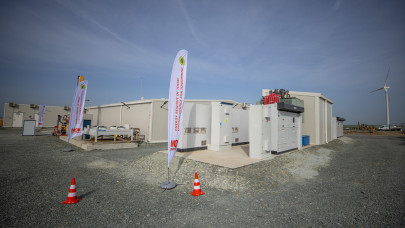However, iBanFirst analysts challenge this consensus, arguing that a sharp renminbi depreciation is unlikely. Instead, for Romania, the most pressing risk in 2025 lies in the continued deterioration of its fiscal situation amid rising global bond yields, which could significantly impact the country's economic stability and investor confidence.
Higher global yields, the real threat in 2025
Since the jumbo September Fed cut, the US 30-year bond yields have increased by +40 bps while in the past it used to decline by 10-50 bps. The increase in bond yields since September 2024 is not primarily driven by Trump's “reflation” policies (which imply stimulating economic growth through fiscal measures), as some analysts suggest. Instead, the rise is due to markets no longer expecting fast rate cuts from the Fed, as the labor market has shown resilience. Higher yields impact global financial conditions, raising borrowing costs worldwide.
This will put countries with fragile fiscal positions, like Romania, under greater investor scrutiny. Romania's fiscal health is particularly weak, with the deficit projected to hit 7% of GDP in 2025, potentially worsening. The automatic 12.1% pension indexation set for January 2025, following an increase in September 2024, is a problematic policy that will add significantly to this deficit. Combined with political uncertainty during an election year, this scenario could drive up the risk premium on Romanian bonds and increase interest costs.
„In our view, the biggest risk for Romania in 2025 is not Trump tariff's policy, the German recession or the Ukraine war but clearly the continued deterioration of the fiscal situation in a context of rising global yields. While a downgrade of Romania's sovereign debt may not occur immediately, it seems inevitable if current trends persist,” Alin Latu, Country Manager Romania and Hungary at iBanFirst.
The impact on the FX market
The good news is that the FX market seems immune to rising political risk and fiscal concerns, for now. Analysts don't see room for FX instability for the EUR/RON cross in 2025. The National Bank of Romania (BNR) is likely to continue intervening to maintain stability by diminishing the interbank liquidity surplus when financial conditions are tighter and by increasing them when they are more accommodating. This strategy has proven successful in limiting volatility so far.
As for the USD/RON and the EUR/USD pairs, capital inflows are now a key factor driving exchange rates. Since November 2024, inflows of capital into the US financial markets, mostly in equities, skyrocketed to $140bn. At the same time, about $14bn exited the European markets, Romania included. Investors favor the U.S. equity market for higher returns and lower risk, pushing the USD up. The dollar is now overvalued by 9% against its main counterparts and could remain close to this level for most of 2025.
Despite Romania's projected 2.5% growth in 2025, returns on investment remain lower than in the U.S., where equity returns exceed 26%. Persistent inflation in Romania, around 4.5%, contrasts with stable U.S. inflation. These factors are likely to drive USD/RON to 5.00 from 4.73. The EUR/USD will hit a low of 1.0350 in early 2025, stabilizing between 1.05 and 1.10 for the rest of the year. The strong dollar environment is set to continue.









